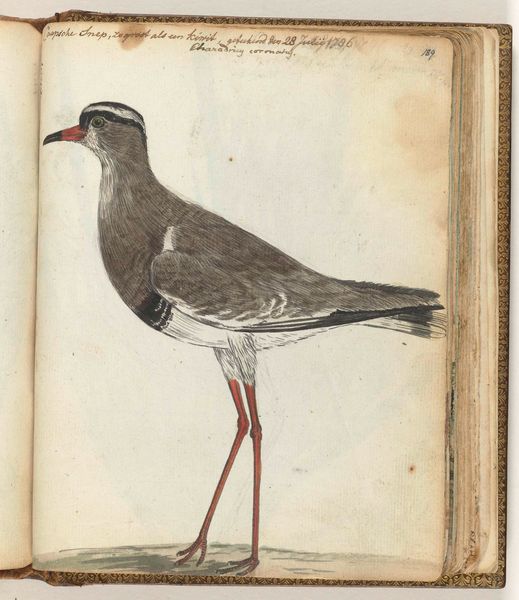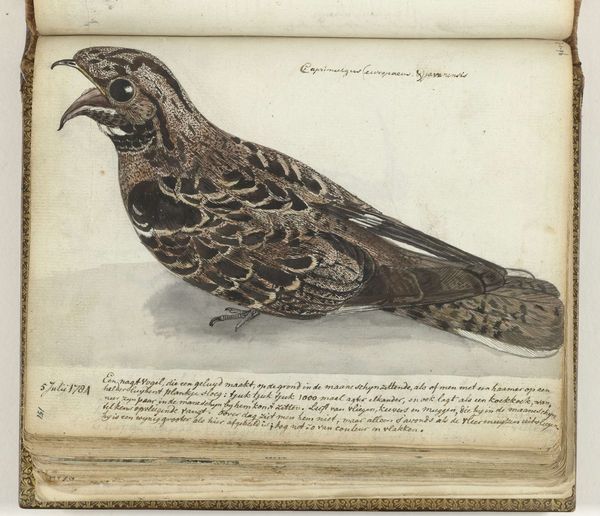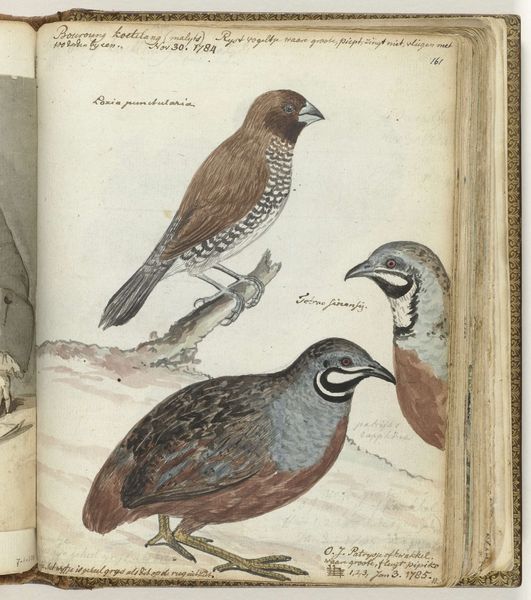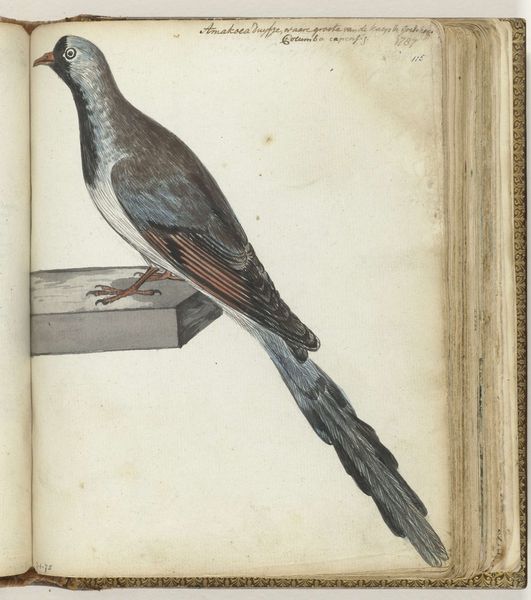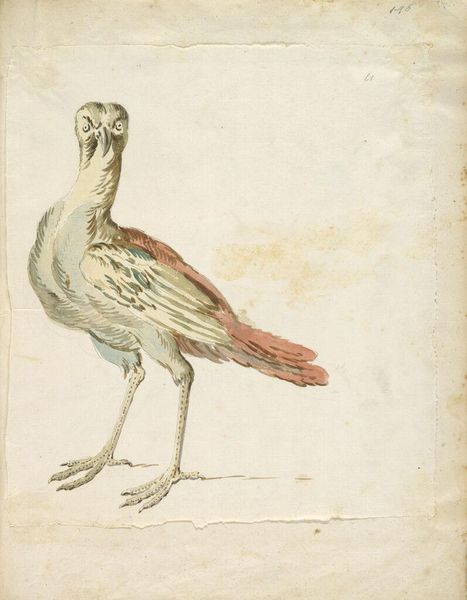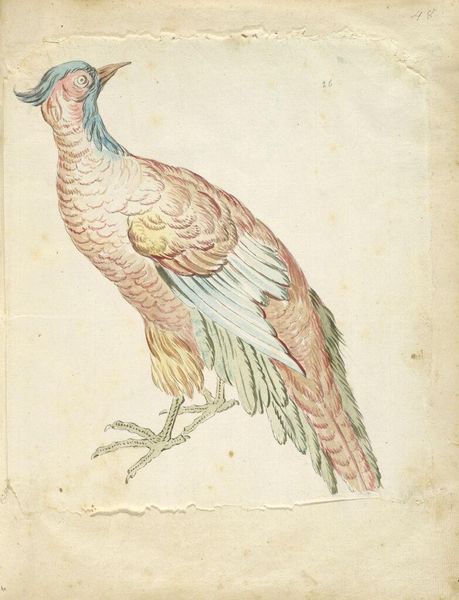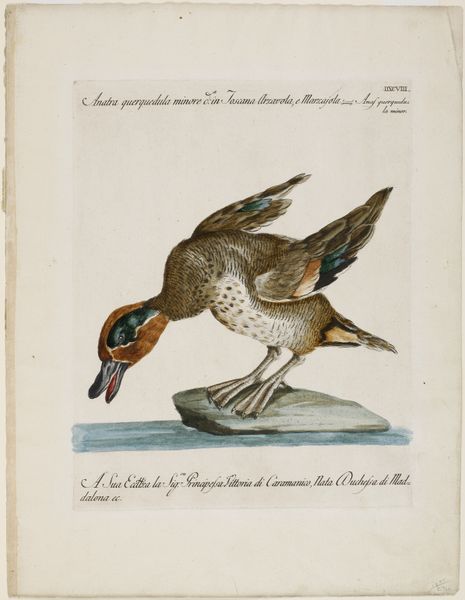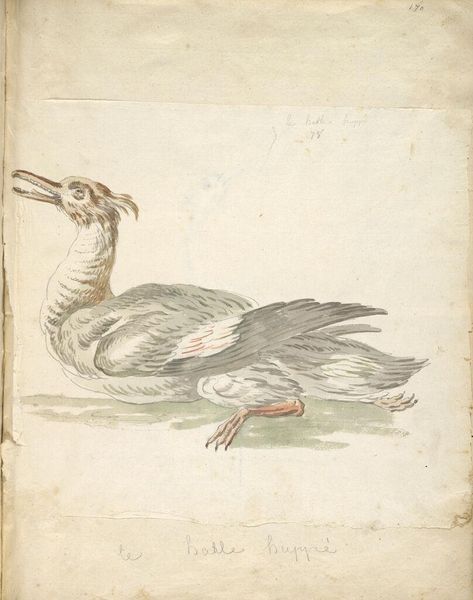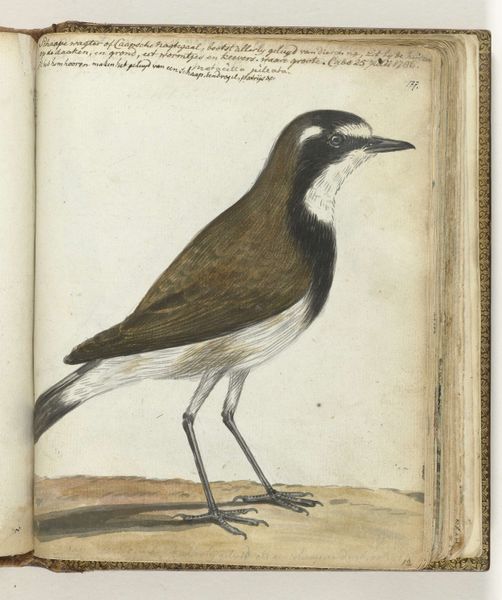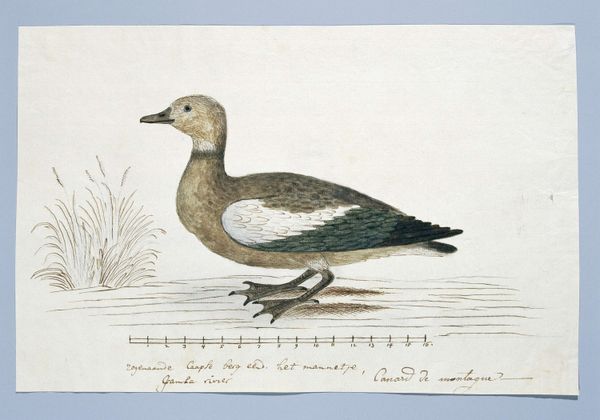
drawing, paper, watercolor, pencil
#
drawing
#
paper
#
watercolor
#
coloured pencil
#
pencil
#
watercolor
#
realism
Dimensions: height 195 mm, width 155 mm
Copyright: Rijks Museum: Open Domain
Editor: This watercolor and pencil drawing, "Javaanse kwartel," possibly from 1785 by Jan Brandes, depicts a quail. The soft coloring and delicate lines give it such a serene and almost scientific feel. How would you interpret this work, looking at its visual language? Curator: It’s interesting how you observe the 'scientific feel' in this image. When I look at this quail, I think about how birds often function as symbols of freedom and the soul across different cultures. Brandes’s careful depiction prompts questions about the cultural and colonial gaze. Do you notice how the detailed notes accompany the drawing, almost pinning it to a specific understanding? Editor: Yes, now that you point it out, the notes do add another layer. The quail feels less like a symbol and more like an object of study or documentation. Does that change how we perceive the cultural weight of the image? Curator: Precisely. It shifts from simple appreciation of nature to a representation of power dynamics. This method of cataloging natural specimens was common during periods of exploration and colonization. Consider the symbolic weight of claiming knowledge about another land's fauna. What does it say about the relationship between the artist, the bird, and the viewer? Editor: I see now – it’s not just a pretty picture, but also a glimpse into the scientific and colonial attitudes of the time. Curator: Exactly! The image holds encoded meanings that are related to the history of scientific exploration. Perhaps these images offered a sense of ownership, too? Editor: It’s fascinating how a simple bird drawing can reveal so much about history and cultural perspectives. Curator: Indeed! Symbols are rarely straightforward. This work reminds us that art, even seemingly objective studies of nature, can reflect deeper cultural narratives and biases.
Comments
No comments
Be the first to comment and join the conversation on the ultimate creative platform.
